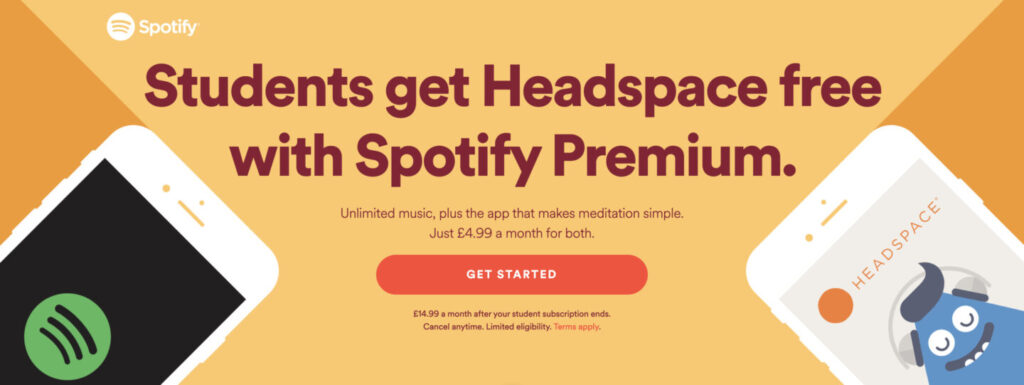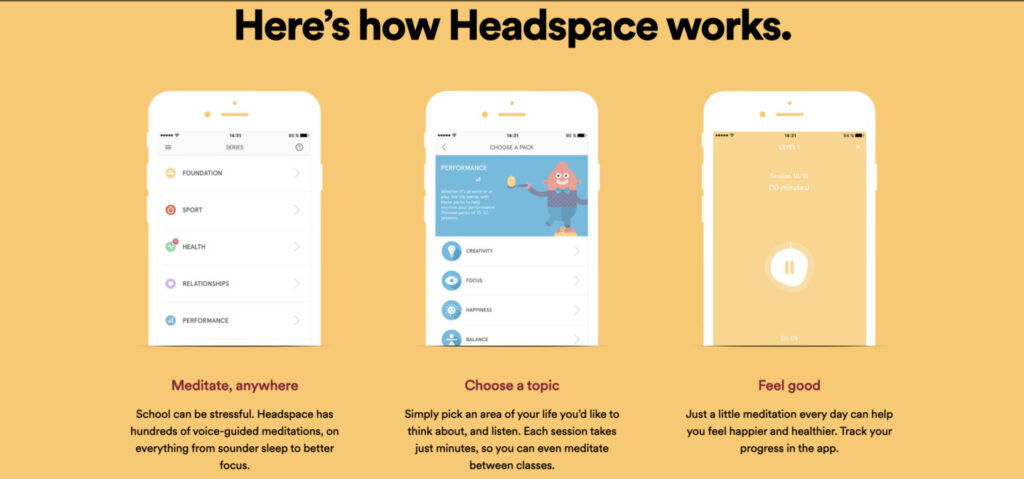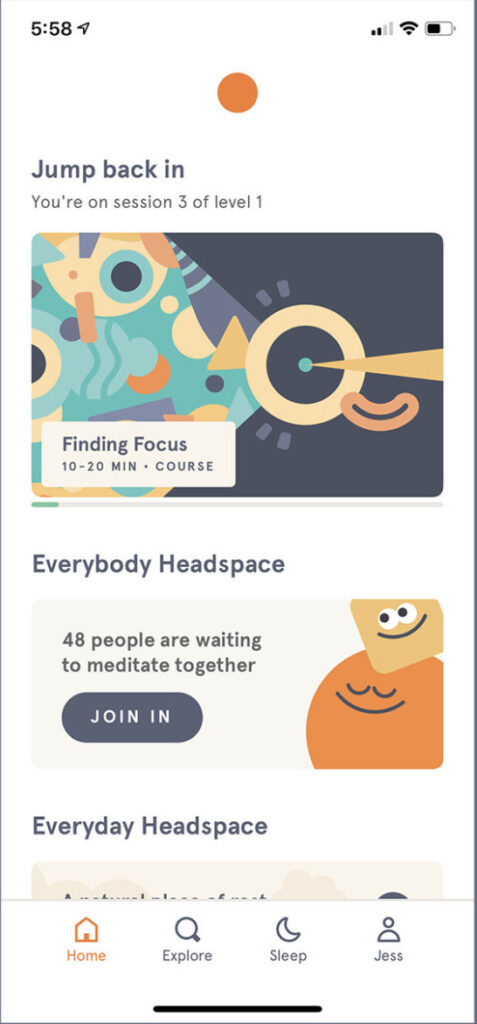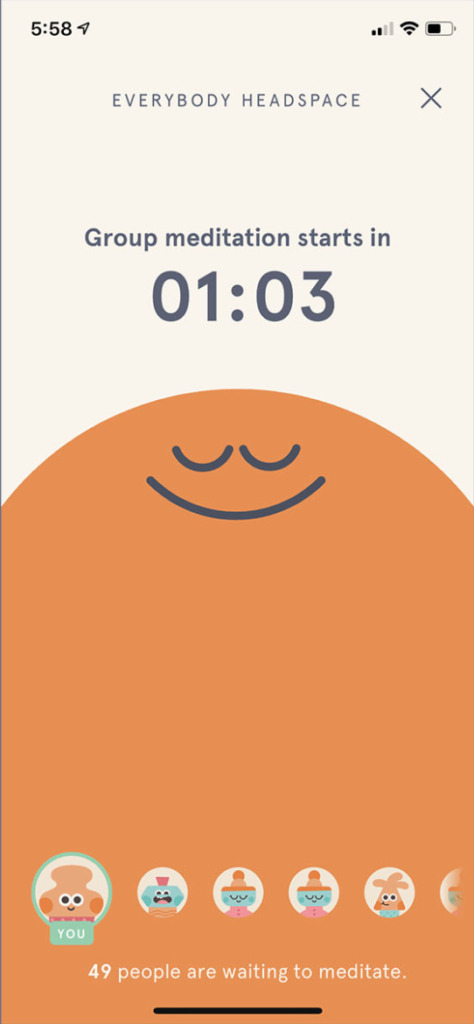Whilst trying to find her inner Zen, Hallie decided to give Headspace, a popular guided meditation app, a try.
This article was originally submitted by Hallie in 2020. We are resharing it for World Meditation Day 2022.
What made me want to try mindfulness?
Between the constant rainy days and increased pressure from my last year of university, I began to feel the effects that increased daily stress was having on me. My focus was off, and I was thinking more negatively which was having an awful impact on all aspects of my life. I knew I needed to try something different to try and get back on track – but I just didn’t know what.
Having been in similar situations in the past, I had tried mindfulness as a method to improve my mental well-being. Unfortunately, I felt that the practices weren’t for me; I found them to be cringey and I even fell asleep most of the time! Needless to say, after a few days, I decided to call it quits.
Since my initial mindfulness attempts, the practice of mindfulness has gained popularity worldwide with millions of people claiming that sticking with it has worked wonders for their mental health and well-being. Mindfulness methods are abundant, from courses to books, to just sitting quietly. I decided that an app would be best to try and channel my inner zen, so I set myself the goal to try out the mindfulness app ‘Headspace’ and share my thoughts with others who may be in a similar predicament.
What is Headspace?
In brief, Headspace is a paid mindfulness training and guided meditation app. To use Headspace, a paid subscription is required which can be paid monthly or yearly. The monthly cost is currently £9.99 per month, with the yearly version costing £49.99. Before you even consider buying the app, I recommend trying the free trial. Luckily for students, Headspace is free with a Spotify Premium subscription, so it’s definitely worth checking out!

My Headspace journey
Once I downloaded Headspace, I decided it would be best to complete the basics 1 course that included 10 different mindfulness sessions. This provided me with a good overview of what the app had to offer. I gained a better understanding of mindfulness practises, becoming more familiar and comfortable with the quite foreign feelings of mindfulness.
Headspace is more than just being told to sit quietly for a specific amount of time. There are an array of tips about how to meditate through their various quirky animations which help you to understand why you’re doing what you’re doing. Breaking down the often-confusing concepts of mindfulness into simple terms really helped me to keep on track and remind me that as long as I’m trying, then I’m being mindful.
After completing the basics course, I decided to delve into some of the more specific videos which ranged from focussing on dealing with anxiety to becoming more productive and improving your prioritization skills. These videos can be singular sessions for a quick fix of meditation or courses which have multiple sessions of mindfulness aimed at the same topic. The playlists that I found particularly useful were ‘work & productivity’ and ‘students’, with the sleep section of the app also being a personal favourite.

The organisation of the content is distinctly grouped making it extremely easy to navigate the cartoony interface. Most videos follow a similar format to the basics videos but aim for you to focus on specific aspects of your life to understand and manage them better. This is particularly beneficial if, like me, you tend to dwell on things that aren’t going so well. These sessions help to acknowledge and accept how you feel but in a way which you aren’t overthinking – a skill which I found difficult but is important to develop.
After trying out a variety of these videos, I found that they can be quite repetitive as Headspace utilise the same concept of mindfulness throughout the app, with a focus on body scanning and breathing, but just apply it to different themes. While being a good way to form a habit, I found this to be a tad boring. Despite this, the mindfulness sessions somehow don’t feel scripted.
Luckily, Headspace has many nice little additions to it, which encourage and motivate you to be mindful. Headspace has a social component, allowing you to connect with your ‘buddies’ to see how much they have been meditating and share your current meditation streak and stats about time spent on the app. You can also take part in group meditation with thousands of users worldwide. Also If you have your notifications turned on for the app, Headspace sends you cute notifications which remind you to take a moment for yourself throughout the day.


The Headspace app itself is not very customisable, but I quite like that because it makes the app really easy to navigate. However, one customisable feature they do have is the option to choose the length of the meditation session, which can range from 1 minute to 20 minutes on average.
The main voices of Headspace are Andy Puddicombe, a former Tibetan Buddhist monk and co-founder of Headspace and a female narrator, Lisa Woodcock. Having only two voices to choose from is beneficial in increasing familiarity, making it a lot easier to focus on the mindfulness itself. Both of these narrators have very calm British accents which I find quite soothing.
After trying multiple different sessions, I found that Headspace was great at engaging me in the practice of mindfulness. As a starting point, Headspace made a complex idea simple. The guided meditations helped me to focus on different aspects of my life that I found difficult to deal with, without having to overthink them. However, I started to feel that the prompts such as “If you feel distracted right now, just focus back on your breathing”, were becoming more of a distraction to me than my actual thoughts.
On the whole, I found the app to be beneficial in improving my mental well-being as I became better able to focus and complete tasks on time to a good standard. However, I wouldn’t personally purchase a yearly subscription to Headspace as I found the content to be repetitive, and the guided aspect of the meditation ended up becoming my biggest distraction. Despite this, I would recommend trying to use headspace for a few months to gain a better understanding and become more familiar with the practices.
Final thoughts
Endless research tells us that mindfulness works to improve mental well-being. However, meditation doesn’t just have to be sitting cross-legged quietly on the floor for hours. If you’re sceptical about mindfulness and meditation and are convinced that it’s not for you, I urge you to try the app – even if it’s for a month.

Related Articles
Read more about apps that could help with your mental wellbeing.




